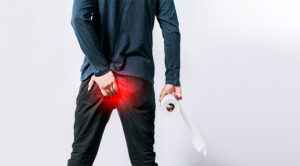Despite its little size, the gallbladder is a vital component of your digestive system. It holds bile, a substance produced by the liver that aids in fat digestion. The wall of the gallbladder is smooth and thin under normal circumstances. However, in certain individuals, an ultrasound or scan reveals the gallbladder wall thickening.
Although there are a number of benign reasons for this finding, gallbladder cancer is one of the more dangerous conditions that it can occasionally signal. For prompt diagnosis and treatment, it is essential to know what gallbladder wall thickening is, what causes it, and when it becomes problematic.
What Is Gallbladder Wall Thickening?
Despite its little size, the gallbladder is a vital component of your digestive system. It holds bile, a substance produced by the liver that aids in fat digestion. The wall of the gallbladder is smooth and thin under normal circumstances. However, in certain individuals, an ultrasound or scan reveals thickening of the gallbladder wall.
Although there are a number of benign reasons for this finding, gallbladder cancer is one of the more dangerous conditions that it can occasionally signal. For prompt diagnosis and treatment, it is essential to know what gallbladder wall thickening is, what causes it, and when it becomes problematic.
Common Causes of Gallbladder Wall Thickening
Thickened gallbladder walls are not always harmful. The two primary categories of causes are malignant (cancerous) and benign (non-cancerous).
1. Benign Causes (Non-Cancerous)
Gallstones (Cholelithiasis):
This is the most frequent cause. Because gallstones can obstruct bile flow, the gallbladder wall may become irritated and enlarge.of the gallbladder wall.
Chronic or Acute Cholecystitis:
Gallbladder inflammation, whether acute or chronic, can cause thickening as a result of recurrent irritation.
Hepatitis or Liver Cirrhosis:
When liver function is impaired, bile drainage and blood flow are impacted, which results in alterations to the gallbladder wall.
Heart or Kidney Failure:
The gallbladder wall may swell as a result of edema, or an accumulation of bodily fluid.
Infections (such as Typhoid or Parasitic Infection):
Some diseases, including parasitic or typhoid, might result in thickening and inflammation.
Adenomyomatosis:
A benign disorder that can occasionally be confused with malignancy in which the gallbladder wall develops microscopic cysts and folds.
2. Malignant Causes (Cancerous)
Gallbladder Cancer (Carcinoma):
Thickening may occasionally be a sign of gallbladder cancer, particularly if it is irregular, nodular, or accompanied by other symptoms like jaundice or weight loss.
How Does Gallbladder Cancer Develop?
When the gallbladder lining cells begin to develop uncontrollably and improperly, gallbladder cancer starts. This may eventually spread to adjacent organs such as the liver or bile ducts.
Because gallstones constantly irritate the gallbladder lining, the majority of gallbladder malignancies begin as chronic inflammation. This could lead to malignant transformation and cellular damage over time.
Unfortunately, gallbladder cancer is often detected late because its early symptoms resemble common digestive problems.
Risk Factors for Gallbladder Wall Thickening and Cancer
Your risk may be raised by specific medical problems and lifestyle choices:
- Gallstones: Over 80% of individuals with gallbladder cancer have gallstones.
- Chronic Gallbladder Inflammation: One of the main causes of chronic gallbladder inflammation is persistent irritation.
- Porcelain Gallbladder: Calcium buildup hardens the gallbladder wall, increasing the risk of cancer.
- Age & Gender: More prevalent among women and those over 50.
- Obesity: Chronic inflammation and gallstones are more likely to occur in obese people.
- Family History: A close relative’s history of cancer or gallbladder illness may increase risk.
- Chronic Infections (Salmonella Typhi): Cellular harm can result from ongoing bacterial infections.
- High-Fat, Low-Fiber Diet: Gallstone development is increased by the high-fat, low-fiber diet that is typical of many urban Indian diets.
Warning Signs and Symptoms
Common signs include:
- Upper right abdominal ache that doesn't go away
- Vomiting and feeling queasy
- After meals, discomfort or bloating
- Fever (when inflammation or illness is present)
- Appetite loss
Possible signs of gallbladder cancer:
- Unaccounted-for weight loss
- Jaundice (eye and skin yellowing)
- Pale stools and dark urine
- There is a noticeable lump in the upper right abdomen.
- Overall weakness and exhaustion
Since these symptoms can be confused with those of other gallbladder disorders, prompt and precise diagnosis is crucial.
How Is Gallbladder Wall Thickening Diagnosed?
The next step is to ascertain the cause of gallbladder wall thickening when an ultrasound or scan reveals it.
1. Ultrasound (Sonography)
Since these symptoms can be confused with those of other gallbladder disorders, prompt and precise diagnosis is crucial.
- The most popular and initial test.
- Aids in determining the wall's thickness and identifying any abnormal lumps, inflammation, or gallstones.
- Malignancy may be indicated by certain patterns, such as uneven thickening or mass development.
2. CT Scan or MRI
- Offers thorough cross-sectional pictures of the liver, bile ducts, and gallbladder.
- Detects whether cancer or inflammation has migrated to adjacent organs.
3. Endoscopic Ultrasound (EUS)
- A more sophisticated examination in which high-resolution pictures of the gallbladder wall are obtained by inserting an ultrasonic probe into the digestive canal.
- Permits the use of a fine-needle biopsy to verify the existence of cancer cells, if necessary.
4. Blood Tests
- Assess liver function (bilirubin, ALP, ALT, and AST) and look for indications of bile duct blockage or infection.
- It is possible to test for tumor markers such as CA 19-9 or CEA, although these tests are not always specific.
5. Biopsy or Surgery
- A biopsy or laparoscopic procedure may be performed to collect tissue samples if malignancy is suspected.
- Whether the thickening is benign or malignant is confirmed by pathological analysis.
Can Gallbladder Wall Thickening Be Treated?
Treatment depends on the underlying cause:
1. For Non-Cancerous Conditions
Gallstones or Cholecystitis:
Laparoscopic gallbladder removal (cholecystectomy) is often recommended.
Infections:
Antibiotics and supportive care.
Systemic Causes (like liver or kidney issues):
Treating the root condition usually resolves the thickening.
2. For Gallbladder Cancer
Early-Stage Cancer:
Surgical removal of the gallbladder (and sometimes part of the liver or bile duct).
Advanced Cancer:
May need chemotherapy, targeted therapy, or palliative care.
The best chance of a cure is early discovery. Due to ambiguous symptoms, a large number of cases in India are regrettably discovered too late.
Prevention Tips
Certain lifestyle modifications can lower the risk of gallbladder issues, even though not all causes can be avoided:
- Maintain a healthy weight and diet rich in fiber.
- Limit fried and fatty foods.
- Stay hydrated and exercise regularly.
- Treat gallstones promptly — don’t ignore abdominal pain.
- Get regular checkups if you have a family history of gallbladder disease.
When to See a Doctor
See a hepatobiliary surgeon or gastroenterologist if you suffer from:
- Recurring right-sided abdominal pain
- Unexplained nausea, vomiting, or jaundice
- An ultrasound showing gallbladder wall thickening
- A family history of gallbladder cancer or chronic gallstones
Early detection of gallbladder disorders, frequently before they become life-threatening, can be facilitated by prompt diagnosis by imaging and consultation.
Final Thoughts
Although gallbladder wall thickening is not necessarily an indication of malignancy, it should never be disregarded. Simple inflammation, infection, or even early gallbladder cancer might cause it.
Accurate diagnosis and early evaluation are crucial. Both benign disorders and even gallbladder cancer in its early stages can be successfully treated if caught early, frequently with laparoscopic surgery and focused therapies.
Recall that addressing stomach problems as soon as possible can have a profound impact. Early detection is always preferable to late treatment when it comes to gallbladder health.





